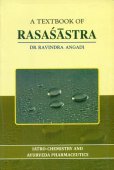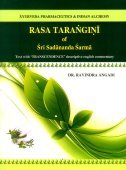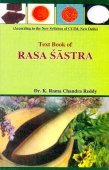Murchana, Mūrcchana, Mūrchana, Murcchana, Mūrchanā: 25 definitions
Introduction:
Murchana means something in Hinduism, Sanskrit, Marathi, Hindi. If you want to know the exact meaning, history, etymology or English translation of this term then check out the descriptions on this page. Add your comment or reference to a book if you want to contribute to this summary article.
Alternative spellings of this word include Murchchhana.
In Hinduism
Ayurveda (science of life)
Rasashastra (Alchemy and Herbo-Mineral preparations)
Source: Wisdom Library: Rasa-śāstraMūrcchana (मूर्च्छन):—Third of the eighteen Saṃskāra (special purification process). They are used to purify rasa (mercury) as per Rasaśāstra literature (Medicinal Alchemy), and are mentioned in texts such as the Rasaprakāśasudhākara. In Āyurveda, Saṃskāra refers to the “detoxification” process of metals and herbs. The Mūrcchana-saṃskāra is commonly used for Dravya-karma and Rasāyana-karma, but also to remove various types of rasa-doṣa (mercury impurities). In other words: the first eight saṃskāras are sequentially used to purify and detoxify mercury in preparation for internal use. Mūrcchana refers to the process of ‘swooning’ of mercury, by which it is ground in a mortar tohether with vegetable matter, until it loses its natural characteristic—lustre, density, volatility, etc.—and becomes purged of certain naturally occurring toxins, impurities, and defects.
Source: Wisdom Library: Rasa-śāstraMūrchana (मूर्छन) refers to the process of “swooning”, a specific processes used for rendering mercury fit for internal use. It is used throughout Rasaśāstra literature, such as the Rasaprakāśasudhākara.
Source: Google Books: The Alchemical Body1) Mūrcchana (third saṃskāra) is the “fainting” or “swooning” of mercury, by which it is ground in a mortar together with vegetable matter, until it loses its natural characteristics (luster, density, volatility, etc.) and form and becomes purged of certain naturally occurring toxins, impurities, and defects. This is to be distinguished from another process of the same name.
2) Mūrcchana as a supplementary operation takes mercury that has already been processed, either through the first eight saṃskāras or by other means, and combines it with sulfur to produce a number of medical preparations for Ayurvedic rasāyana or vājīkaraṇa therapy.
Source: archive.org: History of Indian Science Technology (rasashastra)Mūrchana (मूर्छन, “swooning”) refers to “swooning or making mercury lose its form” and represents to the third of eighteen alchemical purification processes of mercury (mahārasa, rasendra or pārada). A religio-philosophic base was given to mercury-based alchemy in India. Mercury was looked upon as the essence of God Śiva, and sulphur as that of Goddess Pārvatī.
Mercury had to undergo 18 processes (e.g., mūrchana) before it could be used for transforming either metals or the human body. A combination of male and female principles (i.e. mercury and sulphur) forming cinnabar or mercuric sulphide or even of mercury and mica, was supposed to be highly potent and was therefore consumed as a Rasāyana or medicine for increasing body fluids or vitality. The earliest mention of Rasāyana was found in Āyurveda which was probably composed by 8th or 9th century BC, since it was a part of Atharvaveda, the last of the four Vedas.
Source: Academia.edu: Ayurveda and Pharmaceutics (rasashastra)Mūrchana (swooning).—One of the eight Aṣṭasamskāra, or, processes that render mercury fit for internal use. These Aṣṭasamskāra of pārada (eight detoxification techniques for mercury) are mandatory before mercury is used in the pharmaceutical preparations. In the Mūrchana, mercury mixed with jaggery, rock salt etc. is rubbed for three days in khalva (crucible) and then washed with warm water. In the process of mūrchana mercury is mixed with three myrobalans (triphala), aloe etc. is rubbed for another three days before taking it to utpātana process. In this ensuing process distillation apparatus (tiryakpātana) is used.
Source: CCRAS: Ayurvedic pharmacopoeia of India, Appendix IMūrchana (मूर्छन):—The third of the eight purification steps of Pārada (mercury), also known as the Aṣṭasaṃskāra.—Take the ingredients numbered [iii] to [vi], dry, powder and pass through sieve number 85. Add ingredient number [ii] and grind with sufficient quantity of water to prepare kalka. Add Pārada to the kalka and triturate for three days. (see the Rasahṛdayatantra 2.6: a 10th-century Sanskrit alchemical treatise by Govinda Bhagavatpāda).
Ingredients:
- Pārada [Mercury] (1 part),
- Gṛhakanyā [Kumārī] (1/16th part of the Leaves),
- Harītakī (1/16th part of the Pericarp),
- Bibhītaka (1/16th part of the Pericarp),
- Āmalakī (1/16th part of the Pericarp),
- Citraka (1/16th part of the Roots),
Unclassified Ayurveda definitions
Source: Google Books: Ayurveda Materia MedicaMūrchanā (मूर्छना).—According to ayurvedic texts, raw oil has to be processed before it is used for the preparation of medicated oil. This processing is known as mūrchanā.
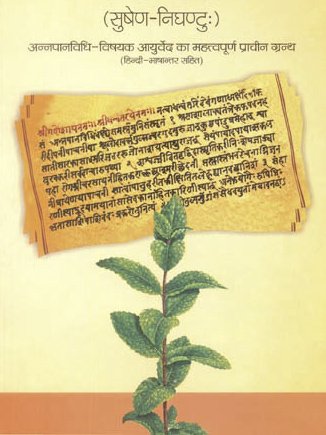
Āyurveda (आयुर्वेद, ayurveda) is a branch of Indian science dealing with medicine, herbalism, taxology, anatomy, surgery, alchemy and related topics. Traditional practice of Āyurveda in ancient India dates back to at least the first millenium BC. Literature is commonly written in Sanskrit using various poetic metres.
Natyashastra (theatrics and dramaturgy)
Source: Wisdom Library: Nāṭya-śāstraMūrchanā (मूर्छना) refers to “modulation” or “melody”: it is a regulated rise or fall of sounds through the grāma (or ‘musical scale’), according to the Nāṭyaśāstra chapter 28. Mūrchanā represents an aspect of musical notes (svara) arising from the vīṇā. These svaras (notes) represent an aspect of ‘musical performance’ (gāndharva), together with tāla (time-measure) and pada (verbal theme). Gāndharva is a combination of vocal music and the music of instruments (ātodya) employed in dramatic performance (nāṭya/ nāṭaka).
Source: archive.org: Illustrations of Indian Music and Dance in Western Indian Style (natya)Mūrchanā (मूर्छना).—The recitation in ascending and in the descending of the seven svaras (musical notes) is called mūrchanā. These are seven in each of the three grāmas (scales). Mūrchanās are twenty-one in all.
The names of twenty-one mūrchanās are:
- uttarā,
- uttaramandrā,
- aśvakrāntā,
- sauvirā,
- nṛhṛṣyakā,
- uttarāyatā,
- rañjanī,
- hṛṣyakā,
- āpyāyinī,
- viśvabhṛtā,
- cāndrī,
- hemā,
- kapardinī,
- maitrī,
- candrāvatī,
- priyasandhani,
- naṭṭi,
- nandī,
- viśālā,
- sumukhī,
- citrāvatī,
Mūrchanā (मूर्छना, “mode”) are of fourteen kinds in the two Grāmas.
Based on the ṣaḍja-grāma there are seven mūrchanās:
- Uttaramandrā,
- Rajanī,
- Uttarāyatā,
- Śuddhaṣaḍjā,
- Matsarīkṛta,
- Aśvakrāntā,
- Abhirudgatā.
The first notes of these are respectively: ṣaḍja, niṣāda, dhaivata, pañcama, madhyama, gāndhāra and ṛṣabha in the ṣaḍja-grāma.
Based on the madhyama-grāma there are seven mūrchanās:
- Sauvīrī,
- Hariṇāśvā,
- Kalopanatā,
- Śuddhamadhyā,
- Mārgavī,
- Pauravī,
- Hṛṣyakā.
The first notes of these are respectively madhyama, gāndhāra, ṛṣabha, ṣaḍja, niṣāda, dhaivata and pañcama.
Thus combined in different orders, the notes constitute fourteen mūrchanās of four classes, such as heptatonic (pūrṇa, lit. full), hexatonic (ṣaḍavakṛta), pentatonic (auḍavitīkṛta) and that including the overlapping note (sādhāraṇakṛta).
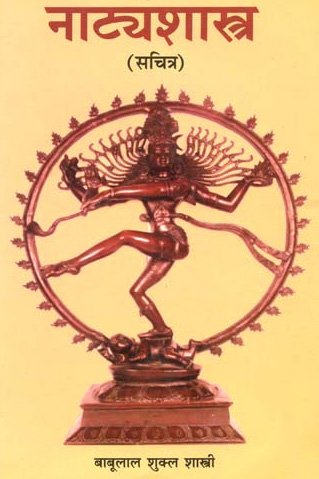
Natyashastra (नाट्यशास्त्र, nāṭyaśāstra) refers to both the ancient Indian tradition (shastra) of performing arts, (natya—theatrics, drama, dance, music), as well as the name of a Sanskrit work dealing with these subjects. It also teaches the rules for composing Dramatic plays (nataka), construction and performance of Theater, and Poetic works (kavya).
Gitashastra (science of music)
Source: Shodhganga: Elements of Art and Architecture in the Trtiyakhanda of the Visnudharmottarapurana (gita)Mūrcchanā (मूर्च्छना) refers to the “ascending and the descending movement of the seven svaras” (in successive order), according to the Saṃgītaratnākara.—In Music, the ārohaṇa i.e., ascending and avarohaṇa i.e., descending of a scale in correct order is known as mūrcchanā. The term mūrcchanā is derived from the root √mūrcch which means to increase. In the Nāṭyaśāstra fourteen types of mūrcchanās are accepted where as the Nāradīyāsikṣā accepts twenty.
In the Viṣṇudharmottarapurāṇa twenty-one types of mūrcchanās are accepted and those are said to be related to seven svaras and are dependent on each of three grāmas.
The following seven mūrcchanās are related to madhyamagrāma:—
- sauvīrī,
- hāriṇāśva,
- kalopanatā,
- śuddhamadhyamā,
- mārgī,
- pauravī and
- ṛṣyakā.
The following seven mūrcchanās are related to ṣaḍjagrāma:—
- uttarāsañja,
- prāñcinī,
- uttarāyatā,
- śuddhā,
- ṣaḍjā,
- matsarīkṛtā and
- aśvakrāntā
The following seven mūrcchanās are related to gāndhāragrāma:—
- ālāpī,
- kuntimā,
- śraddhā,
- uttarā,
- ṣadjā,
- pancāyatā and
- udgatā
Gitashastra (गीतशास्त्र, gītaśāstra) refers to the ancient Indian science of Music (gita or samgita), which is traditionally divided in Vocal music, Instrumental music and Dance (under the jurisdiction of music). The different elements and technical terms are explained in a wide range of (often Sanskrit) literature.
Yoga (school of philosophy)
Source: ORA: Amanaska (king of all yogas): A Critical Edition and Annotated Translation by Jason BirchMūrchanā (मूर्छना) refers to “fainting”, according to the Amanaska Yoga treatise dealing with meditation, absorption, yogic powers and liberation.—Accordingly, as Īśvara says to Vāmadeva: “[...] [Now], I shall define the nature of that highest, mind-free absorption which arises for those devoted to constant practice. [...] For a Yogin who is in an absorption for a period of six moments, loss of body heat, sleep and fainting (mūrchanā) may occur repeatedly. [...]”.
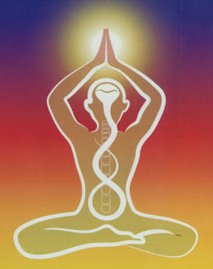
Yoga is originally considered a branch of Hindu philosophy (astika), but both ancient and modern Yoga combine the physical, mental and spiritual. Yoga teaches various physical techniques also known as āsanas (postures), used for various purposes (eg., meditation, contemplation, relaxation).
Languages of India and abroad
Marathi-English dictionary
Source: DDSA: The Molesworth Marathi and English DictionaryMūrcchanā (मूर्च्छना).—f S Fainting or swooning. 2 A tone or semitone as placed in its scale,--the seventh part of a grāma or scale. There are twenty-one.
Source: DDSA: The Aryabhusan school dictionary, Marathi-EnglishMūrcchanā (मूर्च्छना).—f Fainting. swooning.
Marathi is an Indo-European language having over 70 million native speakers people in (predominantly) Maharashtra India. Marathi, like many other Indo-Aryan languages, evolved from early forms of Prakrit, which itself is a subset of Sanskrit, one of the most ancient languages of the world.
Sanskrit dictionary
Source: DDSA: The practical Sanskrit-English dictionaryMūrcchana (मूर्च्छन).—a. (-nī f.)
1) Stupefying insensibility or stupor (an epithet applied to one of the five arrows of Cupid).
2) Increasing, augmenting, strengthening.
-nam, -nā [murccha-yuc]
1) Fainting, swooning.
2) Prevalence, growth, increase (usually n. in this sense); अनुकर्षं च निष्कर्षं व्याधिपावकमूर्च्छनम् (anukarṣaṃ ca niṣkarṣaṃ vyādhipāvakamūrcchanam) Mahābhārata (Bombay) 2.13.13.
3) A process in metallic preparation, calcining quicksilver with sulphur; cf. मूर्च्छा (mūrcchā) (3) also.
4) (In music) The rising of sounds, an intonation, a duly regulated rise and fall of sounds conducting the air and the harmony through the keys in a pleasing manner, changing the key or passing from the key to another; modulation, melody; स्फुटीभवद्ग्रामविशेषमूर्च्छनाम् (sphuṭībhavadgrāmaviśeṣamūrcchanām) Si.1.1; भूयो भूयः स्वयमपि कृतां मूर्च्छनां विस्मरन्ती (bhūyo bhūyaḥ svayamapi kṛtāṃ mūrcchanāṃ vismarantī) Meghadūta 88; वर्णानामपि मूर्च्छनान्तरगतं तारं विरामे मृदु (varṇānāmapi mūrcchanāntaragataṃ tāraṃ virāme mṛdu) Mṛcchakaṭika 3.5; सप्त स्वरास्त्रयो ग्रामा मूर्च्छनाश्चैकविंशतिः (sapta svarāstrayo grāmā mūrcchanāścaikaviṃśatiḥ) Pañcatantra (Bombay) 5.54; (mūrcchā or mūrcchanā is thus defined:-kramāt svarāṇāṃ saptānāmārohaścāvarohaṇam | sā mūrcchetyucyate grāmasthā etāḥ sapta sapta ca || see Malli. on Śiśupālavadha 1.1 for further information); 'यत्रैव स्युः स्वराः पूर्णा मूर्च्छना सेत्युदाहृता (yatraiva syuḥ svarāḥ pūrṇā mūrcchanā setyudāhṛtā)' com. on Rām.1.4.1.
Source: Cologne Digital Sanskrit Dictionaries: Shabda-Sagara Sanskrit-English DictionaryMūrcchana (मूर्च्छन).—nf. (-naṃ-nī) 1. Fainting syncope, swooning, meeting. 2. Vehemence growth, increase. 3. Causing insensibility, (applied to one of the five arrows of Kama.) 4. Calcining quicksilver with sulphur, &c. f.
(-nā) 1. The rise and fall of sounds in music. 2. Modulation, melody. E. mūrcch to faint, to become insensible, aff. lyuṭ.
Source: Cologne Digital Sanskrit Dictionaries: Benfey Sanskrit-English DictionaryMūrchana (मूर्छन).—i. e. murch + ana, I. n. Modulation, [Rāmāyaṇa] 1, 4, 11. Ii. f. nā. 1. A melody, [Meghadūta, (ed. Gildemeister.)] 84. 2. A tone as placed in its scale, the seventh part of a scale, [Lassen, Anthologia Sanskritica.] 39, 9; [Pañcatantra] iii. [distich] 43.
Source: Cologne Digital Sanskrit Dictionaries: Cappeller Sanskrit-English DictionaryMūrchana (मूर्छन).—[adjective] stunning; strengthening (—°). [neuter] increase, growth; [feminine] ā fainting, swooning; swelling or rising of sounds, intonation, note, tone or semitone (in the scale), melody.
Source: Cologne Digital Sanskrit Dictionaries: Monier-Williams Sanskrit-English Dictionary1) Mūrchana (मूर्छन):—[from mūrch] a mfn. stupefying, causing insensibility (applied to one of the 5 arrows of Kāma-deva), [Rāmāyaṇa]
2) [v.s. ...] (ifc.) strengthening, augmenting, confirming, [Pañcarātra]
3) [v.s. ...] n. (mc.) and f(ā). fainting, swooning. syncope, [Suśruta; Kirātārjunīya [Scholiast or Commentator]]
4) [v.s. ...] n. (in music) modulation, melody, a regulated rise or fall of sounds through the Grāma or musical scale (ifc. f(ā). ), [Kāvya literature; Purāṇa; Saṃgīta-sārasaṃgraha]
5) [v.s. ...] n. vehemence, violence, prevalence, growth, increase (of diseases, fire etc.), [Mahābhārata]
6) [v.s. ...] n. (also f(ā). ) a [particular] process in metallic preparations, calcining quicksilver with sulphur, [Bhāvaprakāśa; Rasaratnākara]
7) b See p. 823, col. 3.
Source: Cologne Digital Sanskrit Dictionaries: Yates Sanskrit-English DictionaryMūrcchana (मूर्च्छन):—[(naṃ-nā)] 1. n. f. Fainting; mixing; a tone in music.
[Sanskrit to German]
Sanskrit, also spelled संस्कृतम् (saṃskṛtam), is an ancient language of India commonly seen as the grandmother of the Indo-European language family (even English!). Closely allied with Prakrit and Pali, Sanskrit is more exhaustive in both grammar and terms and has the most extensive collection of literature in the world, greatly surpassing its sister-languages Greek and Latin.
Hindi dictionary
Source: DDSA: A practical Hindi-English dictionary1) Mūrcchana (मूर्च्छन):—(nm) fainting, swooning.
2) Mūrcchanā (मूर्च्छना):—(nf) cadence, modulation (in music); the scale obtained by a module shift within a gamut.
...
Kannada-English dictionary
Source: Alar: Kannada-English corpusMūrchana (ಮೂರ್ಛನ):—[noun] = ಮೂರ್ಛನೆ [murchane].
Kannada is a Dravidian language (as opposed to the Indo-European language family) mainly spoken in the southwestern region of India.
Nepali dictionary
Source: unoes: Nepali-English DictionaryMūrcchanā (मूर्च्छना):—n. 1. name of a particular melody in music; 2. → मूर्च्छा [mūrcchā]
Nepali is the primary language of the Nepalese people counting almost 20 million native speakers. The country of Nepal is situated in the Himalaya mountain range to the north of India.
See also (Relevant definitions)
Starts with: Murccanai, Murccanam.
Ends with (+5): Apyayinimurchana, Ashvakrantamurchana, Candravatimurchana, Candrimurchana, Citravatimurchana, Hemamurchana, Hrishyakamurchana, Kapardinimurchana, Maitrimurchana, Nandimurchana, Naramurchana, Nattimurchana, Nrihrishyakamurchana, Priyasandhanimurchana, Ranjanimurchana, Sammurchana, Sauviramurchana, Sumukhimurchana, Uttamamurchana, Uttaramandramurchana.
Full-text (+165): Matsarikrita, Shuddhashadja, Pauravi, Harinashva, Hrishyaka, Vimurchana, Kalopanata, Uttarayata, Sauviri, Uttaramandra, Madhyamadhya, Shuddhamadhyama, Ashvakranta, Jayashekhara, Matangaja, Ashtasamskara, Shuddhamadhya, Abhirudgata, Margavi, Alapa.
Relevant text
Search found 18 books and stories containing Murchana, Mūrcchana, Mūrcchanā, Murcchana, Mūrchana, Mūrchanā; (plurals include: Murchanas, Mūrcchanas, Mūrcchanās, Murcchanas, Mūrchanas, Mūrchanās). You can also click to the full overview containing English textual excerpts. Below are direct links for the most relevant articles:
The Brahmanda Purana (by G.V. Tagare)
Chapter 61 - A dissertation on Music < [Section 3 - Upodghāta-pāda]
Notes on Grāmas, Mūrcchanās and Tānas < [Notes]
Chapter 62 - The science of music < [Section 3 - Upodghāta-pāda]
Natyashastra (English) (by Bharata-muni)
Part 3 - Literature on Ancient Indian Music < [Introduction, Part 2]
Chapter XXVIII - On the Instrumental Music (ātodya)
Part 2 - The Ancient Indian Theory and Practice of Music < [Introduction, Part 2]
Vishnudharmottara Purana (Art and Architecture) (by Bhagyashree Sarma)
3. Vocal Music (Gīta) < [Chapter 2 - Music]
3. The Viṣṇudharmottarapurāṇa and Modern Music < [Chapter 6 - Modern Relevance of Different Art Forms and Architecture]
Chaitanya Bhagavata (by Bhumipati Dāsa)
Verse 1.1.37 < [Chapter 1 - Summary of Lord Gaura’s Pastimes]
Shishupala-vadha (Study) (by Shila Chakraborty)
Knowledge of Music in the Śiśupālavadha < [Introduction]
The Markandeya Purana (by Frederick Eden Pargiter)
Related products
